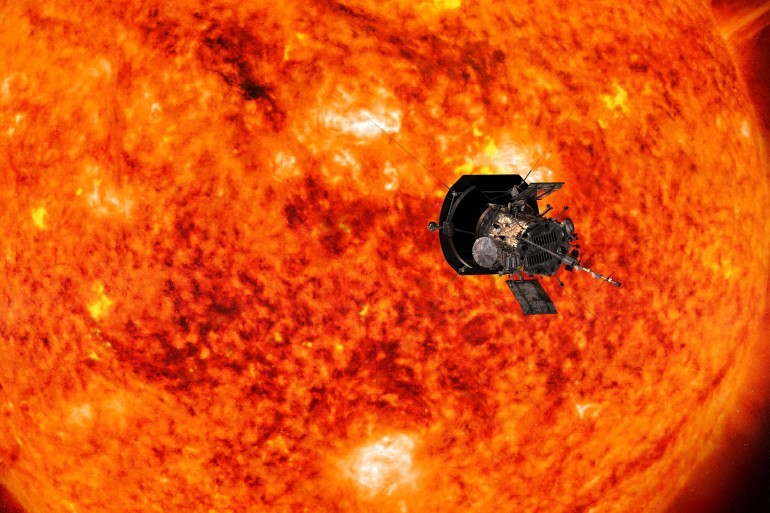
NASA's Parker Solar Probe has achieved an extraordinary feat by completing its closest-ever approach to the Sun, marking a groundbreaking moment in space exploration. The probe passed just 3.8 million miles from the Sun's surface on December 24, making it the nearest any human-made object has come to our star.
Racing at an astounding speed of 430,000 mph (692,000 km/h), the car-sized spacecraft ventured through the Sun's outer atmosphere, known as the corona, while enduring temperatures up to 982°C (1,800°F) and intense radiation.
The probe's survival was confirmed when scientists at the Johns Hopkins Applied Physics Laboratory in Maryland received a beacon signal just before midnight EST on December 26, indicating the spacecraft remained in good health and operating normally. More detailed status data is expected to reach Earth on New Year's Day.
Protected by a 4.5-inch carbon-composite shield capable of withstanding temperatures up to 1,377°C (2,500°F), the probe carries four instrument suites designed to study the Sun's corona. The mission aims to help scientists understand how the corona reaches millions of degrees in temperature and trace the origins of solar wind - the continuous flow of material escaping the Sun.
Dr. Nicola Fox, NASA's head of science, celebrated the achievement: "It is breaking all of these records and it's just a total 'Yay, we did it!' moment."
Launched in 2018, the Parker Solar Probe has completed 21 orbits around the Sun, with Venus flybys gradually adjusting its trajectory closer to our star. The probe is expected to maintain this close orbital distance through September, continuing its mission to unravel the mysteries of our nearest star.
This unprecedented proximity to the Sun allows scientists to gather crucial data about solar wind, which can impact Earth by interfering with power grids and communication systems when large particle ejections occur. The mission's findings could advance our understanding of solar phenomena and their effects on our planet's technology and infrastructure.
The probe, named after solar wind theory pioneer Dr. Eugene N. Parker, is approaching the final stages of its planned seven-year mission, during which it was scheduled to complete 24 orbits around the Sun.